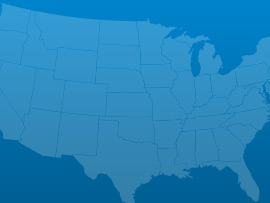Tennessee’s Aviation Infrastructure serves both commercial and general aviation needs.
The network consists of 69 Public Use Airports, including 2 medium-sized commercial hub airports, 3 primary commercial non-hub airports, 1 non-primary commercial facility, and 64 general aviation facilities. According to the most recent data available from the Federal Aviation Administration (FAA), Tennessee was host to over 8.6 million enplanements in 2014, with Nashville ranking 3rd nationally among medium-sized hubs. Tennessee’s aviation infrastructure has seen slight improvements in recent years due to implementation of a pavement management program, and recent projects that were completed, including the replacement of at least one bgeneral aviation airport (Hardwick field) with a new facility (Cleveland jetport) that increased capacity and safety. Memphis ranked #1 overall in 2014 for amount of tons landed at U.S. airports. A 2014 study of runway, taxiway, and aircraft parking apron pavements at Tennessee General Aviation airports indicates satisfactory condition. However, pavement constantly deteriorates with time and use. In 2015, the Tennessee Department of Transportation (TDOT) Aeronautics division developed a state-wide pavement management program to assess pavement conditions and analyze needs for pavement restoration and maintenance. Tennessee utilizes an aviation fuel tax as its primary funding source for aviation infrastructure. Recently, legislation was enacted to cap the amount of aviation fuel tax that can be collected from a single entity. It’s important to note that unless a new funding source is located to replace the revenue lost by the Tax Cap, the ability to meet future infrastructure needs is greatly decreased.
 Aviation
Aviation Bridges
Bridges Dams
Dams Drinking Water
Drinking Water Inland Waterways
Inland Waterways Roads
Roads Schools
Schools Transit
Transit Wastewater
WastewaterA: Exceptional, B: Good, C: Mediocre, D: Poor, F: Failing, ?: Incomplete
Each category was evaluated on the basis of capacity, condition, funding, future need, operation and maintenance, public safety, resilience, and innovation
Aviation
69 public-use airports
Bridges
1,157 of the 20,058 bridges are structurally deficient
Bridges
$48.20 million in bridge funds came from the Federal Highway Bridge Fund in 2011
Dams
100% of the state regulated dams have an Emergency Action Plan
Dams
148 high hazard dams
Drinking Water
$2.7 billion in drinking water infrastructure needs over the next 20 years
Energy
9.125 gigawatt-hours of renewable energy every year, ranking it 8th
Hazardous Waste
15 sites on the National Priorities List
Inland Waterways
950 miles of inland waterways, ranking it 11th nationally
Levees
100 miles of levees
Ports
34.1 million short tons of cargo in 2012, ranking it 22nd nationally
Public Parks
$1.6 billion of unmet needs for its parks system
Rail
25 freight railroads covering 2,656 miles across the state, ranking 27th nationally by mileage
Roads
10,401 of the state’s 95,523 public roads are major roads, and 6% are in poor condition
Roads
$1.0 billion a year in costs to motorists from driving on roads in need of repair, which is $225 /yr per motorist
Schools
$3.6 billion in estimated school infrastructure funding needs
Transit
29.4 million annual unlinked passenger trips via transit systems including bus, transit, and commuter trains
Wastewater
$1.4 billion in wastewater infrastructure needs over the next 20 years

March 03, 2017
As the President’s repeated in his address to Congress his pledge to dramatically increase infrastructure spending to the tune of $1 trillion, various Congressional Committees

March 01, 2017
On Tuesday night, President Trump addressed a joint-session of Congress for the first time in his presidency. Infrastructure was among the many issues he discussed.

February 28, 2017
U.S. motorists set a new record for vehicle miles travelled (VMT) in 2016, driving over 3.2 trillion miles, an increase of 70 billion miles from

February 17, 2017
Romantic dates, the Grammy awards and celebrating black history are not the only milestones of this week; the Oroville dam crisis in California and the